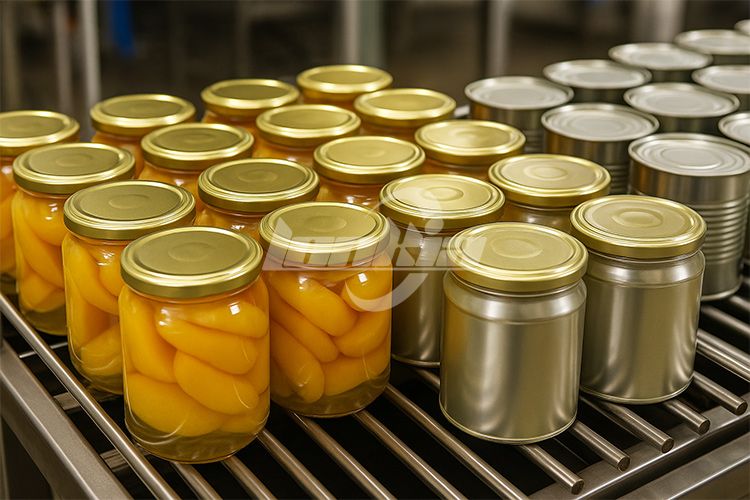In the world of food packaging, two of the most common formats are glass jars and tin cans. While both are widely used in canning production lines, they serve different purposes and come with distinct advantages. If you're planning to invest in or upgrade your food processing facility, understanding the differences between glass jar and tin can canning lines is essential for making the right choice.
1. Material and Packaging Considerations
Glass Jars
Made from inert material, glass is non-reactive and ideal for acidic foods like jams, pickles, and sauces.
Offers transparency, allowing consumers to view the contents—enhancing perceived quality.
Heavier and more fragile, requiring more careful handling and thicker packaging.
Tin Cans
Constructed from steel or aluminum and often coated to prevent food interaction.
Strong, durable, and lightweight, making them ideal for high-speed, automated production.
Opaque and more suitable for long-term storage and transport.

2. Production Line Design
Glass Jar Canning Line
Includes components like depalletizers, jar washers, filler/cappers, pasteurizers, and labelers.
Typically operates at a slower pace due to fragility and need for precision handling.
Requires more sophisticated alignment and lower-speed conveyors.
Tin Can Canning Line
Incorporates can seamers, vacuum/gas fillers, sterilization tunnels, and automatic stackers.
Optimized for speed and continuous production.
Can handle a wide range of food types, including soups, meats, vegetables, and beverages.
3. Shelf Life and Storage
Tin cans generally offer a longer shelf life and are better suited for warehousing and shipping over long distances.
Glass jars provide premium appeal but may have shorter shelf life unless refrigerated or pasteurized.
4. Environmental Impact and Recycling
Glass is 100% recyclable without degradation, but energy-intensive to produce and ship due to weight.
Tin cans are also recyclable, though they often require separation from coatings or labels during processing.
5. Cost Considerations
Tin canning lines are generally more cost-effective at high volumes due to speed and automation.
Glass jar lines may have higher initial costs due to equipment complexity and slower throughput.
Conclusion
Both glass jars and tin cans have their place in modern food production. Choose glass jars if your focus is on premium presentation and product visibility, especially for gourmet or specialty products. Opt for tin cans if you're prioritizing durability, efficiency, and large-scale distribution. The best solution depends on your specific product type, branding strategy, and production goals.
